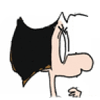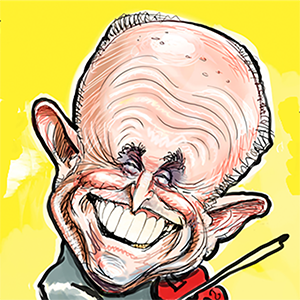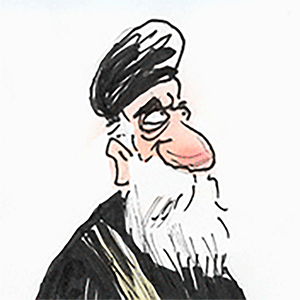Truist Championship golfers love Philadelphia Cricket Club's short -- but 'diabolical'-- par-3 No. 14 hole
Published in Golf
PHILADELPHIA — They don’t make short par-3s like they used to. In fact, they pretty much don’t make them at all anymore, at least on the courses designed for current professional golfers.
But that doesn’t mean the best in the game don’t appreciate the charm of a 100-125-yard hole, like the miniature, but vexing, No. 14 at Philadelphia Cricket Club’s Wissahickon Course during the Truist Championship.
“I think 14 is an awesome hole, the short par-3,” world No. 5 Justin Thomas said. “I will take that to my grave that short par-3s are just so much better than any long par-3. I don’t think I’ve ever played a par-3 over 200 yards that I would call memorable for its design versus it seems like all par-3s that are short like that are great.
“So I think holes like that are fun.”
For Cricket members, the 122-yard hole is No. 3 at the 103-year old track. For this week’s PGA tour event, the shortest par-3 on the course comes before a four-hole finish that ends with the two longest par-4s at No. 17 (498 yards) and No. 18 (517 yards).
The par-5 No. 15 may end up yielding the most birdies, but No. 14 may be the second-best chance to get strokes back before the home stretch. That doesn’t mean bogeys aren’t possible. On Thursday, when the pin hugged the left side and greens were their softest, 12 players failed to make par.
No. 14 was more getable on Friday, despite the rainy and cold weather. But on a windy Saturday that made the course firmer and shots harder, the hole was more challenging. Organizers chose a pin location just four paces off the left and six from the deepest part of the green.
Birdies were still more likely. But as Jim Smith Jr., director of golf at Cricket, predicted before the tournament, No. 14 would penalize wayward wedges.
“I would say this is probably going to be considered a birdie hole by most of the players. They almost never play holes this short,” Smith said. “Now, here’s the thing: if the place is firm and fast, and depending on the pin position, this could go from a birdie hole to a bogey hole in a hurry.
“In the Constellation Senior Players [in 2016], when it was really firm and windy, this was downwind. The back pin, you would think, back pin, they’ll eat it up, right? Boink. Over the green, guys making doubles.”
Wyndham Clark did just that on Saturday with a strong wind at his back. Playing in the first twosome, the 2023 U.S. Open champion flew his tee shot over the green and 40 feet from the hole. He got up and down for par, but he wouldn’t be the first to overcook his approach.
Lucas Glover, playing alongside Clark, took the more popular route. He landed his three-quarter wedge around six feet under the hole and made the putt.
Despite its short length, the 7,119-yard Wissahickon Course held up relatively well versus the modern game. Players took advantage of benign conditions on Friday. Nearly the entire field posted red numbers. Keith Mitchell shot a course-record 61.
“Wiss” showed its teeth during a soggy, chilly second round and a blustery third round, though. Rory McIlroy was probably right when he said another 500-600 yards was needed to test big hitters in the game and put more bunkers in play off the tee.
But many of the pros raved about the A.W. Tillinghast-designed layout with its old-school look and feel. McIlroy may have still hit driver off most tees, but there were still drives that required less club and more thought.
And the green complexes often forced strategic approaches to surfaces that were undulating and with multiple tiers. No. 14’s skinny “turtleback” green offered that same feature, with menacing deep bunkers surrounding it.
“The green is pretty diabolical,” said Sepp Straka, who was in third place entering the third round. “So you’ve got to make sure you hit a good wedge shot.”
Mitchell said No. 14, which he parred on the first day and birdied the next, was his favorite hole on the course.
“I think good, short par-3s are — I wouldn’t say lost in modern golf architecture — but they’re rare, much more rare,” Mitchell said on Thursday. “That one is just the perfect example. The pin today was only three off the left, so guys were hitting it really close. But if you missed it three paces left, there was no way you were getting up-and-down.”
No. 14 shares a tee box with the par-4 fourth, which heads in the other direction. A large front bunker obscures the front of the green. There isn’t much of a change in elevation. Wispy golden fescue gives the hole a distinctive Scottish appearance.
According to world No. 3 Xander Schauffele, all four par-3s at Wissahickon were “the coolest looking holes” on the course. Irishman Shane Lowry, when asked for a comparison to No. 14, said it reminded him of No. 13 at nearby Merion Golf Club’s famed East Course.
“I haven’t played Merion since 2008,” Lowry said, “but that’s the only one that comes to the top of my head.”
Merion has hosted five U.S. Opens and returns in 2030. In 2013, the last time the USGA held its premier event there, leader Phil Mickelson blasted his tee shot over the 127-yard hole in the final round. He made bogey and never rebounded and finished runner-up in the major once again.
There are other famous short par-3s. Two of the most famous are on courses that continue to host majors — the 109-yard No. 7 at Pebble Beach in California and the 123-yard No. 8 at Royal Troon in Scotland.
Both have cool nicknames: the former known as “7th Heaven” for its scenic views of the Pacific coast and the latter as “The Postage Stamp” for the diminutive size of its green. Just three miles away in Oreland, there’s Manufacturers Golf Club’s picturesque 117-yard No. 8.
But for this week, at least, No. 14 at Wissahickon — which played from 109 to 127 yards — is getting its due.
Birdies were bountiful. Canadian Corey Conners went right at the stick on Friday, spun back his ball and hit fellow countryman Adam Hadwin’s ball, which was already 17 inches from the hole. Nick Taylor nearly aced the 14th when he used the bank on the right side of the green to roll to within inches.
When McIlroy walked onto the tee box on Friday, a steady rain opened umbrellas and altered the attack. He overdrew his wedge and landed 29 feet to the left. When he lined up to putt, local traffic compelled McIlroy to address two strolling patrons.
“Guys, stop,” he said.
McIlroy then rolled one in for birdie.
There are other celebrated par-3s. Augusta’s devilish No. 12 and Sawgrass’s island green No. 17. They may be a little longer at 155 and 137 yards, respectively, but they certainly qualify as short masterpieces — like Wissahickon’s No. 14.
“I think the best par-3s in the world are all short ones,” Lowry said. “Obviously, I’d say, 14 is playing pretty easy this week because the green’s soft. But I’d love to see this place firm and fast and see what it would be like set up for like a U.S. Open.
“This is one of the cooler golf courses, I think that we play. I’ve enjoyed it. Straightaway when I stepped on the property here, I knew I was going to like this place.”
He wasn’t the only one.
©2025 The Philadelphia Inquirer. Visit inquirer.com. Distributed by Tribune Content Agency, LLC.







Comments